How to Make Your Own Ring Light
With and Without
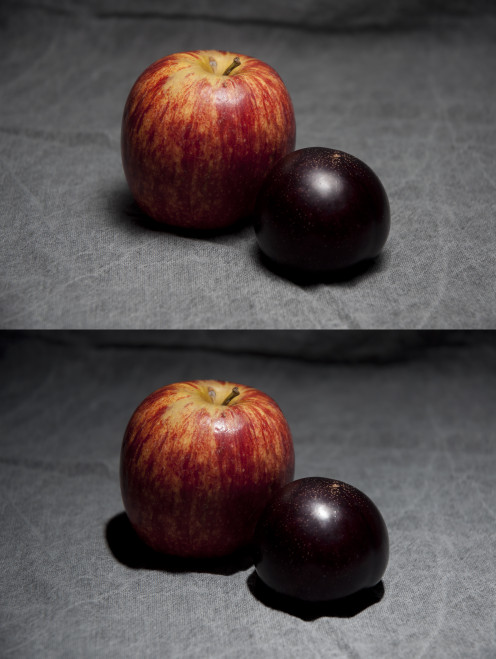
What you need (some are optional)
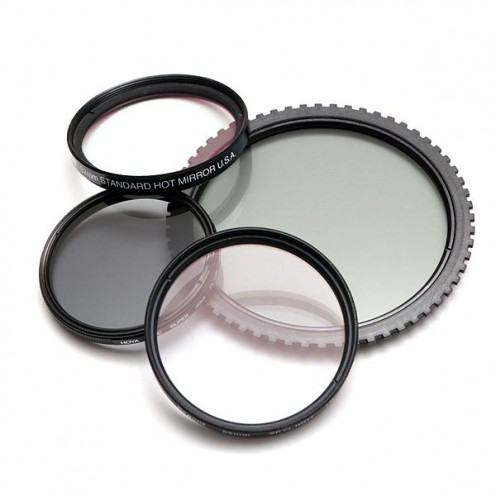
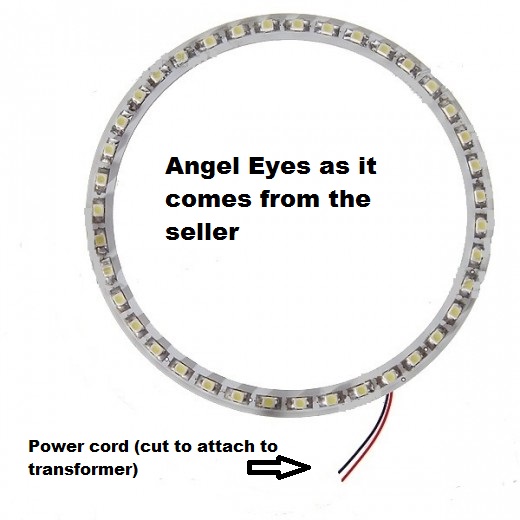
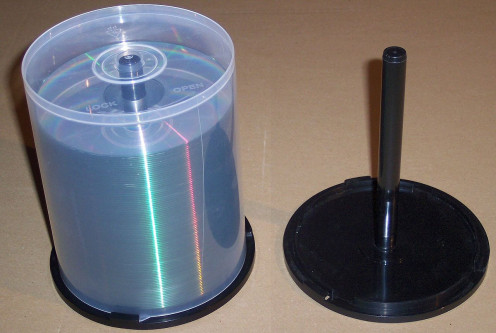
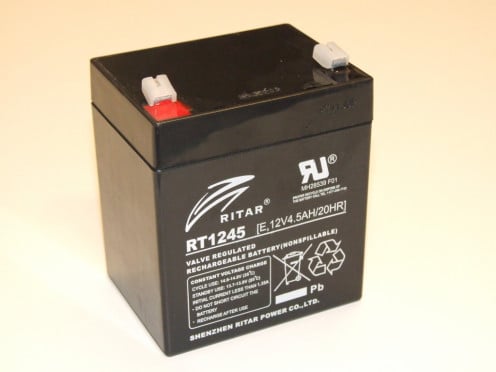
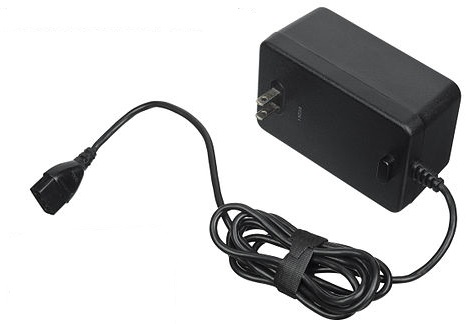
If you are one who enjoys doing macros in the studio or at home or even if you just want to have a ring light in case you come upon a good macro scenery and want to make sure that the subject is well lit then you basically have two choices.
You can either buy a ring light/flash which can run you from $79.00 to $379.00 or you can do one yourself for less than $20.00 or even less plus on top get to enjoy the fruits of your labor.
Since a ring light is nothing more than a circular array of small lights, basically any such setup, with LED's being the best, will work just as fine.
These ring lights usually come by the name of angel eyes and they were developed to be used around a regular round car headlight, especially by BMW.
"A ring flash, invented by Lester A. Dine in 1952, originally for use in dental photography,[citation needed] is a circularphotographic flash that fits around the lens, especially for use in macro (or close-up) photography. Its most important characteristic is providing even illumination with few shadows visible in the photograph, as the origin of the light is very close to (and surrounds) the optical axis of the lens. When the subject is very close to the camera, as is the case in macro photography, the distance of the flash from the optical axis becomes significant. For objects close to the camera, the size of the ring flash is significant and so the light encounters the subject from many angles in the same way that it does with a conventional flash with soft box. This has the effect of further softening any shadows.
Ring flashes are also very popular in portrait and fashion photography. In addition to softening shadows and creating circular highlights in the model's eyes, the unique way that a ring flash renders light gives the model a shadowy halo that is a common feature of fashion photography.
A macro ring flash usually consists of two parts:
- a power and control unit mounted on a hot shoe, and
- a circular flash unit mounted on the front of a lens." Wikipedia

You need a ready made set of angel eyes which can be bought for about $4.00 from such places as DX Deal Extreme. They come in several schemes such as 15 to 39 or more lights and they are rather easy to mount on a DIY plastic mount or lens adapter or even a filter holder.
To diffuse the light (ring light cover) you can use a cut out from any translucent plastic.The best source is a pattern cut out from a CD holder (they are usually called a CD Cake Box) and mounting it on the finished set up.
All sizes should match; in other words if your angel eyes set is 72mm, then the adapter should also be 72mm and the plastic CD holder cut out should fit these dimensions too.
Are you willing to try this?
So far as adapters, the best are those taken from an old, un-serviceable screw in type filter holder.
Glue the angel eyes set onto the outside (facing away from the lens) rim of the screw in type filter mount and glue the the plastic CD holder cut out to this.
The plastic provides a diffusing effect and its light is softer. Remember that the plastic cut out must not be clear, soft white is better.
This is not a crucial step since the filter holder will suffice but it gives it a more professional looking appearance. Mine does not use it as I just glued the angel eyes to the filter holder and screwed it to the lens.
Alternatively, you can glue the angel eyes set directly to the lens but when you think of how little a used adapter can cost why ruin a lens?
Another variation is to use a lens hood or basically anything to which you can attach the angel eyes and in turn attach to the lens. One of my friends is so "cheap" or rather practical...ahem...that he attached the angel eyes to a foam cup which in turn fits "snugly" against the lens.
Caveat; If you are going to get very physically close to the subject, then adding the CD cut out is a must, to avoid casting strong shadows and or having a "washout effect".
If not then you can skip making this plastic diffuser but using one is always recommended.
Order of set up (This is the simplest way)
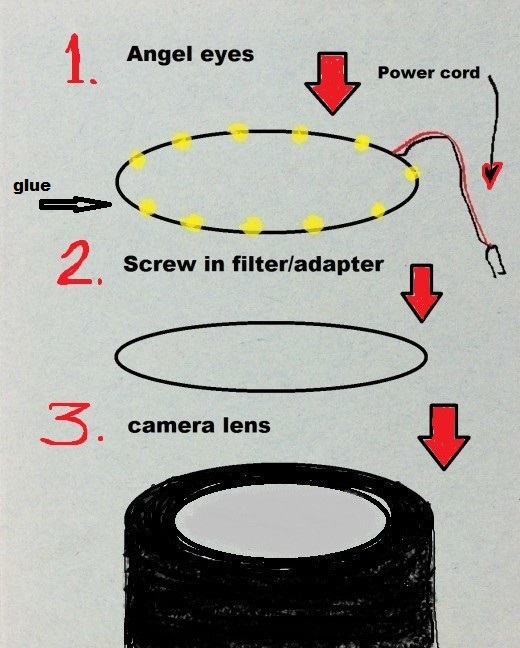
Let's talk power source. A real commercially bought ring flash uses the camera's power supply while this set up is meant to be used with a 12 volt one.
You can either use a 12 volt rated battery like a motorcycle one (about $15.00 new) or a regulated wall transformer, rated for 12 volts (about $9.00 new). I use a wall transformer since I only do macros in the studio.
By using a battery or wall mount transformer keep in mind that you have to cut the ends of the angel eyes power cord and adapt them to be used with wires going to the power supply.
This also means that this set up is not for field work but rather to be used in the confines of your studio or home.
To conclude, here are the pros and cons of the DIY set up and a commercial ring flash:
Commercial Ring Flash
| ||
|---|---|---|
Pros
| Mobility
| Light weight
|
Cons
| Cost ($79 to $379)
| Mostly flash
|
DIY Set Up
| ||
|---|---|---|
Pros
| Cost ($15 to $25)
| Continuous light source
|
Cons
| Mobility
| About 1 hour of handy work
|
Typical Ring Flash
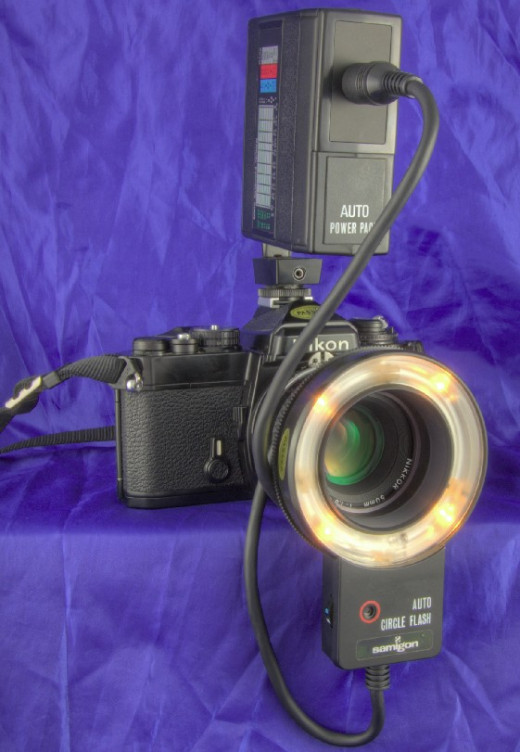
This tutorial is not the all or nothing best source for DIY ring flash/lights.
There are many other alternatives and some can cost you even less.
I chose to go with the angel eyes set simply because most of the work was already done and they look rather nice.
Here is another link with more DIY ring light tutorials:
© 2015 Luis E Gonzalez










